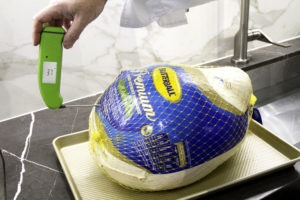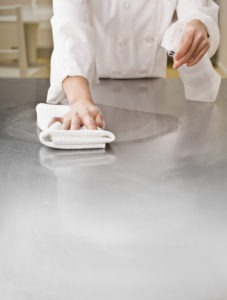Uncommon knowledge exists that if you don’t properly thaw your turkey, you won’t have a successful turkey cookout. Continue reading for the thermal tips required to plan the thawing of your turkey and to ensure that you do it safely, even though there are many ways to ensure that it is thawed correctly for Thanksgiving—or any other day!
The holiday season is upon us, and with it comes the inevitable challenge of preparing a delicious Thanksgiving feast. A centerpiece of this feast is often a perfectly roasted turkey. However, thawing a large frozen turkey can be a logistical nightmare, especially if you have limited refrigerator space. Fortunately, there’s a simple and effective solution: thawing your turkey in a cooler.
Thawing a Turkey in a Cooler: A Step-by-Step Guide
Materials:
- Large cooler (capacity depends on the size of your turkey)
- Ice
- Thermometer
- Plastic bag
Instructions:
- Prepare the cooler: Clean your cooler thoroughly with soap and water. Ensure it’s large enough to comfortably accommodate your turkey.
- Place the turkey in the cooler: Remove the turkey from its packaging and place it in a plastic bag. This helps prevent cross-contamination.
- Add ice: Fill the cooler with ice, surrounding the turkey completely.
- Monitor the temperature: Insert a thermometer into the thickest part of the turkey breast, ensuring it doesn’t touch the bone. The temperature should remain between 34°F and 39°F.
- Thawing time: Depending on the size of your turkey, thawing time will vary. As a general guideline, allow 24 hours for every 5 pounds of turkey.
- Check regularly: Check the turkey and ice every 12 hours, replacing melted ice with fresh ice as needed.
- Thawing complete: Once the turkey is completely thawed, remove it from the cooler and proceed with your recipe.
Tips for Thawing a Turkey in a Cooler
- Use a large cooler: A larger cooler will provide better insulation and maintain a more consistent temperature.
- Use enough ice: Don’t skimp on the ice. The more ice you use, the longer it will take for the ice to melt and the temperature to rise.
- Check the temperature regularly: This is crucial to ensure the turkey thaws safely and evenly.
- Don’t thaw the turkey at room temperature: This can lead to bacterial growth and foodborne illness.
- Cook the turkey immediately after thawing: Once thawed, the turkey should be cooked promptly to prevent spoilage.
Advantages of Thawing a Turkey in a Cooler
- Frees up refrigerator space: This is especially helpful during the holidays when refrigerator space is at a premium.
- Maintains a safe temperature: The cooler provides a controlled environment that keeps the turkey at a safe temperature throughout the thawing process.
- Prevents cross-contamination: The plastic bag helps prevent the turkey from coming into contact with other food items in the cooler.
- Simple and convenient: Thawing a turkey in a cooler is a straightforward process that requires minimal effort.
Frequently Asked Questions
Q: How long does it take to thaw a turkey in a cooler?
A: The thawing time depends on the size of the turkey As a general guideline, allow 24 hours for every 5 pounds of turkey.
Q: Do I need to change the ice in the cooler?
A: Yes, you should check the ice every 12 hours and replace melted ice with fresh ice.
Q: Can I thaw a turkey in a cooler without ice?
A: It’s not recommended to thaw a turkey in a cooler without ice. The turkey will thaw too slowly, which can lead to bacterial growth.
Q: Is it safe to thaw a turkey at room temperature?
A: No, it’s not safe to thaw a turkey at room temperature. The turkey will thaw unevenly, and the outer parts of the turkey can reach temperatures that allow bacteria to grow.
Q: What should I do with the turkey after it’s thawed?
A: Once the turkey is thawed, you should cook it immediately to prevent spoilage.
Thawing a frozen turkey in a cooler is a safe, effective, and convenient method that can save you valuable refrigerator space during the holiday season. By following the simple steps outlined above, you can ensure that your turkey thaws evenly and safely, ready to be the centerpiece of your Thanksgiving feast.
Verifying A Proper Thaw for Your Turkey

Take the turkey’s temperature to ensure it has thawed properly. Insert the tip of your Thermapen deeply into the breast in multiple places, right through the wrapper. Look for a temperature no lower than 30°F (-1. 1°C) and no higher than 40°F (4. 4°C).
As you insert the probe tip into the turkey meat, keep an eye on the display; the lowest reading is crucial for the thawing process.
➤If you find a temperature lower than 30°F (-1. 1°C), keep thawing!.
Thawing a turkey in the sink
Yes, you can thaw your turkey in the kitchen sink, but proceed with extreme caution.

- Thawing in a sink is like thawing in a bucket. By adding ice to the water, you must keep it cold, but you must take great care to prevent any of that icy turkey water from splattering onto other work surfaces. To deal with any spills, use cleaners or antibacterial wipes. After emptying the sink, clean it with a disinfectant as well.
- Use a ChefAlarm to monitor the temperature in the sink. Don’t let it get above 40°F (4. 4°C). If the temperature rises above that threshold, drain some water and add ice. To prevent the probe from being submerged, secure it to the sink’s edge. Alternatively, use the Pro Series® Waterproof Needle Probe and submerge it in the sink.

- Once more, you can use a Thermapen to check the water’s temperature every 30 minutes if you don’t have a leave-in probe thermometer. If you didn’t thaw your turkey in time, this may annoy you, but it’s preferable to a badly cooked turkey!
